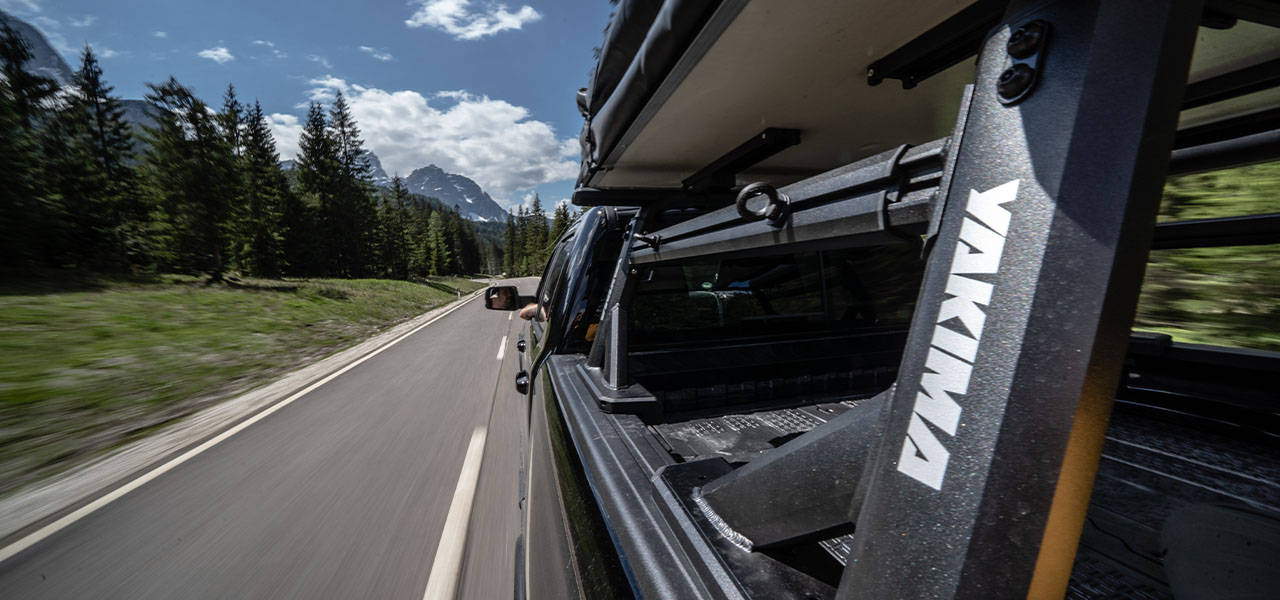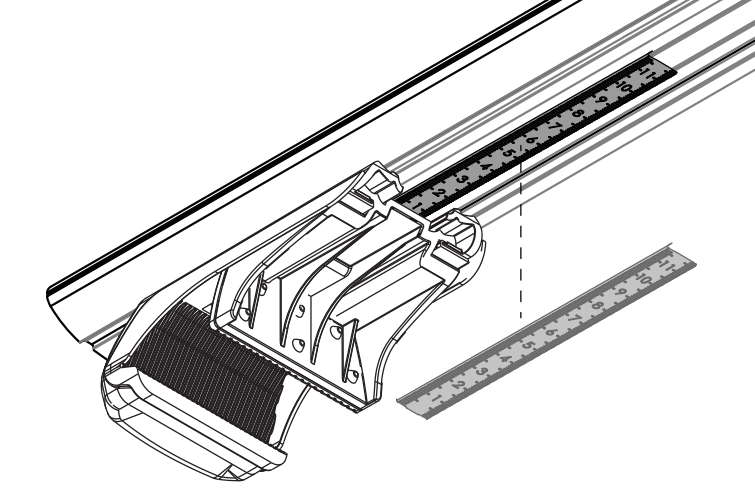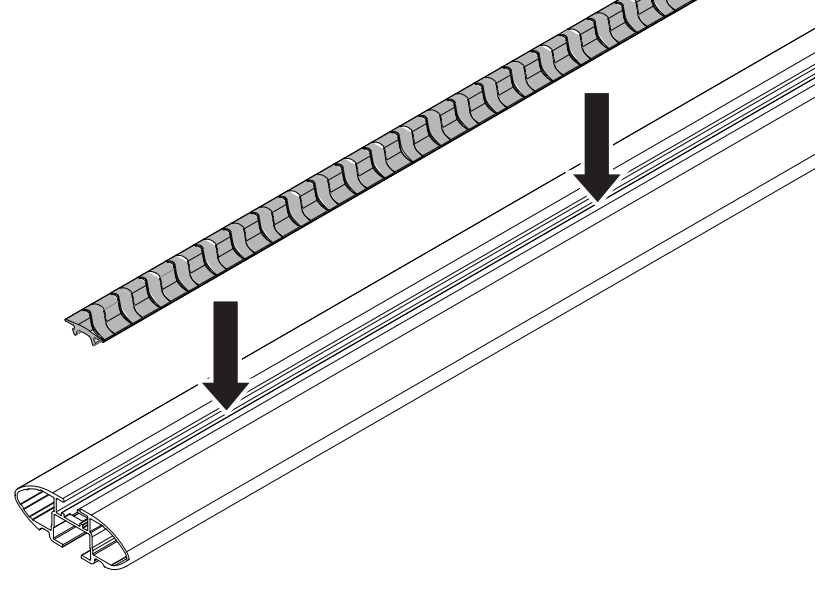My Roof Rack is Making Noise: How Do I Stop This?
Last Updated: 18 May 2023
If you've ever driven with a roof rack, you may have heard an annoying noise coming from the top of your car. These noises can be anything from a soft rumble to a loud whistle, and they can be annoying and confusing for drivers. The good news is that these sounds are often easy to fix by making a few simple changes. This piece will talk about the different kinds of noise that roof racks can make, as well as some good ways to stop them.
No matter what kind of noise you are dealing with, there are many good ways to stop it. In the parts that follow, we'll talk about some tips and tricks that can help you get rid of roof rack noise and make driving more enjoyable.

Common Causes of Roof Rack Noise
It is crucial to remember that many sorts of noise can be produced by roof racks, and they are frequently subjective to the individual. Some drivers may hear a low-pitched vibrating sound, while others may hear a high-pitched whistle. Understanding the sort of noise you're hearing is critical to determining the best way to fix it. Roof rack noises that are common include:
Open Slots/Channels
Roof racks make the most unpleasant and grating noise when they whistle. This high-pitched sound can be irritating and distracting, making driving unpleasant. Fortunately, there are techniques to reduce noise and enjoy a more peaceful ride.
When air rushes through open slots or channels in a Roof rack, it can produce a high-pitched noise. While the noise may not affect some people, it can be rather uncomfortable for others and even make it difficult to concentrate while driving.
A correctly mounted roof rack should not whistle in general. However, gaps or open channels in the rack's design or installation method can allow air to flow through and cause noise. If you hear whistling, it is critical to determine the source of the noise and take appropriate action.
Buffeting
Buffeting, or wind noise, is a common issue experienced by drivers who have roof racks installed on their vehicles. This kind of noise is often described as “wind noise” or “rushing air” like you would experience driving with the windows down. Most of the time, this happens with larger loads or platform roof racks.
Poorly Fitted Straps/Loads
One common cause of roof rack noise is poorly fitted straps or loads. When the straps aren't tight enough or the load isn't secured properly, it can cause the load to vibrate against the roof rack. This can cause a variety of noises, including rattling, buzzing, or humming sounds. It's important to properly secure your load to prevent these types of noises.
Another issue with poorly fitted straps or loads is the risk of damage to both the roof rack and the load. When the load isn't secured tightly, it can shift during transit and potentially damage the roof rack or even fall off the vehicle. This can be dangerous for other drivers on the road and can also result in expensive repairs or replacements. It's important to always double-check that your load is tightly secured before hitting the road.
If you're experiencing noise from your roof rack and suspect it may be due to poorly fitted straps or loads, it's important to address the issue as soon as possible. Not only can it be annoying and distracting while driving, but it can also lead to potential safety hazards and damage to your vehicle.
Vehicle’s Roof
The way that the roof of the car is constructed might also be a source of noise from the roof rack. When travelling at high speeds, there is a chance that low-pressure zones will form between the roof rack and the car's roof. These zones have the potential to "suck" the roof up towards the rack, but under strain, it will immediately pop back down. This cycle might cause audible vibrations, especially if the roof is not solid enough to withstand the force of the wind.

How to Stop Roof Rack Noise
Roof rack noise can be annoying, but it can be stopped or at least cut down a lot. Don't let a noisy roof rack keep you from having fun on your next trip. Take the steps you need to in order to cut down on noise and enjoy the ride:
Follow the Fitting Instructions: Most roof racks are inherently quiet, as manufacturers go to great lengths to prevent whistling and noise. The number one cause of wind noise we encounter can be chalked up to “last-step fatigue”. Often, the last several steps of fitting a roof rack are intended to combat noise. It is easy to get “on a roll” and skip the last few steps, but you will be left with a roof rack that whistles.


Cover any slots or channels on the car that run "east to west": If the channels in the roof rack system are not closed, they can make whistling or humming sounds. If your roof rack has openings, cover them with foam tape or rubber strips. These materials can make a big difference in how loud it is. Also, to cut down on wind noise, it's important to cover any gaps or channels that run "east to west" across the car. Some roof rack manufacturers sell rubber inserts for their bars. While intended to prevent wear and tear on loads, they can also minimise whistling when it occurs.
Adding Wind Deflectors: Wind deflectors are a great addition that can cut down on the noise made by the roof rack. Wind deflectors help keep the wind from hitting the rack directly; instead sending it over the roof of the car. What most roof rack retailers won’t tell you is that wind deflectors are a ‘treatment,’ not a ‘cure’.
A wind deflector can help with a whistling platform or “flat rack," reduce or eliminate a vibrating roof, and can change the profile of “wind noise.”. They are designed to make the noises you hear more bearable, not eliminate them entirely. In fact, they will often cause more “wind noise” or buffeting.
One of our staff members experienced drastic whistling from his set-up and installed a wind fairing on his Hilux. He found that while high-pitched whistling had occurred somewhere between 60 and 70 km/h, with the fairing, this shifted to somewhere between 90 & 100 km/h. For him, this was a win, as he spends most of his time at 80km/h on his way to work.
It is important to ensure that the wind fairing you select is compatible with your roof rack and sized correctly for your application. If you’re unsure, it is always better to contact an expert prior to purchasing.
When not in use, take out any empty accessory holders: If the accessory holders are empty and not being used, they can make noise while moving. When the wind blows, these holders can catch the wind and make noise. To cut down on noise, it's best to take out any empty accessory cases when they're not being used. If you have to keep them on the rack, make sure they are tight so they don't make a lot of noise.
Finally, while roof rack noise can be an annoyance and a distraction for drivers, there are various ways to decrease or eliminate it. Understanding the many types of noise and their origins is critical in determining the best treatment. It's also critical to fix any noise concerns with your roof rack as soon as possible to avoid potential safety hazards or car damage.
Overall, implementing a few basic actions to decrease roof rack noise will improve the driving experience. Whether you're going on a road trip or just running errands around town, reducing roof rack noise can help reduce tension and make your trip more enjoyable.